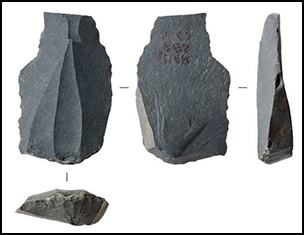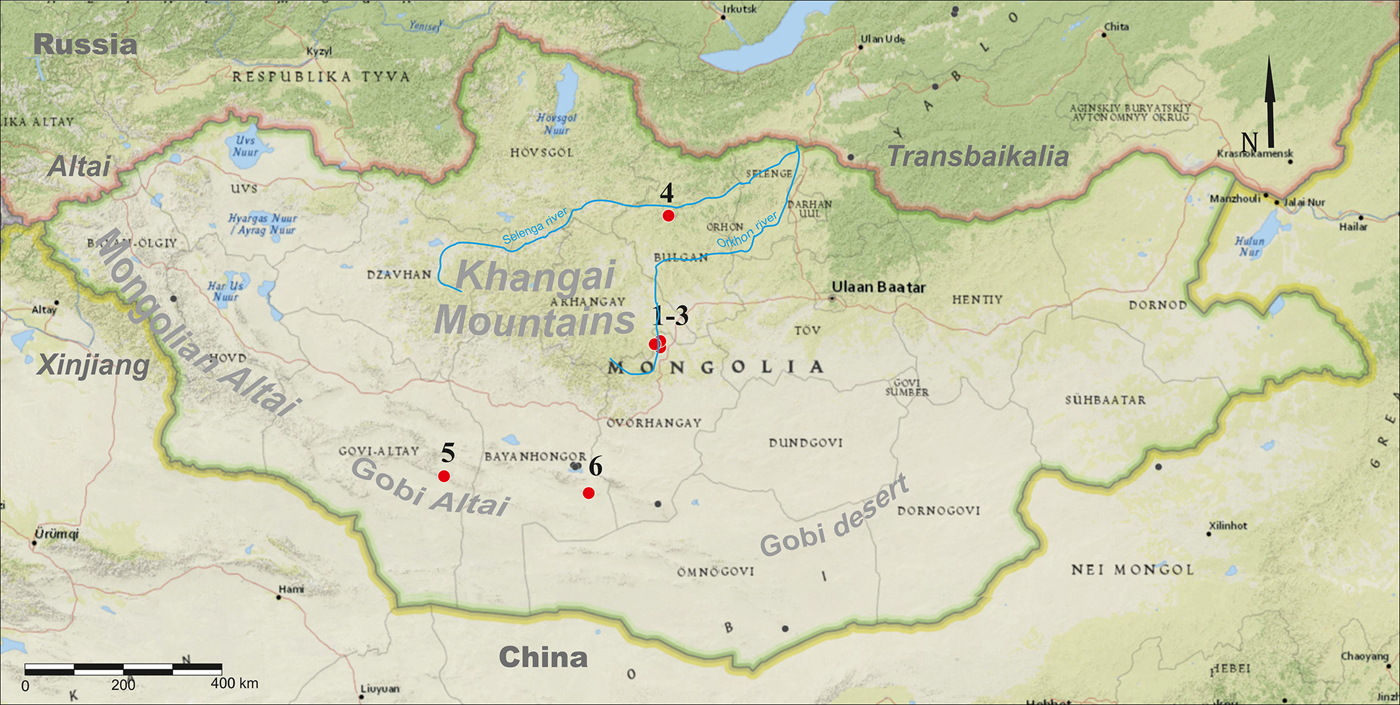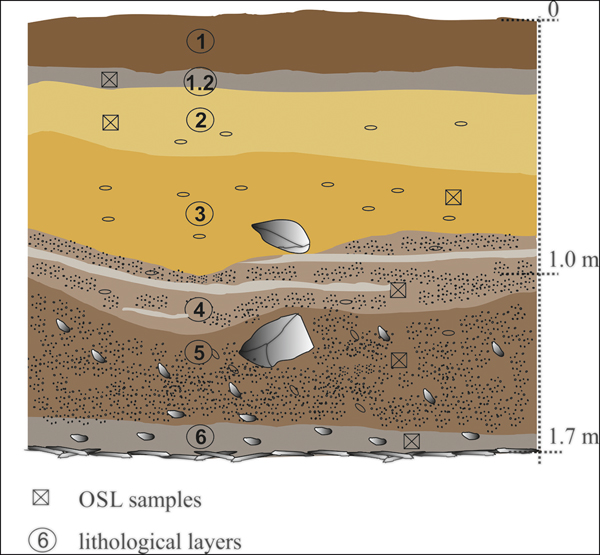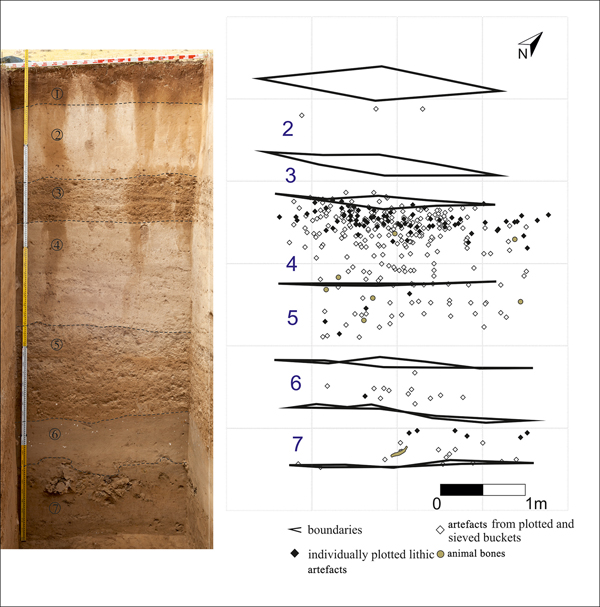According to current perspectives on the routes of ancient human dispersal in Eurasia during the Middle and Late Pleistocene, migration corridors were palaeoclimatically homogeneous regions. Palaeolakes and freshwater arteries defined exit routes from Africa through the Arabian Peninsula, ultimately traversing South Asian rainforests farther to the east (Roberts et al. Reference Roberts, Perera, Wedage, Deraniyagala, Perera, Eregama, Gledhill, Petraglia and Lee-Thorp2015; Dennell Reference Dennell2017). Eastern Central Asia is the current focus of much research because this territory was a contact area between Western Eurasian and Eastern Asian geographic and cultural macro-regions. One prehistoric migration route has been identified in eastern Central Asia, following the course of one of the region's principal fluvial arteries—the Selenga River Basin. During the Late Pleistocene (c. 50 000–12 000 years ago), this area witnessed the movement of early humans between northern Mongolia and Transbaikalia in southern Siberia, following the tributaries of the Selenga River and exploiting primary raw material outcrops along the way. Another possible earlier corridor is located in the Orkhon-Selenga mountain zone. Three stratified Palaeolithic sites in that zone—Orkhon-1, Orkhon-7 and Moil'tyn-am—have yielded the longest cultural and stratigraphic sequences anywhere in Mongolia, including both Middle Palaeolithic and Upper Palaeolithic materials (Figure 1). A project, aimed initially at re-dating these three localities, began in 2018 with the re-excavation of the Moil'tyn-am and Orkhon-1 sites.
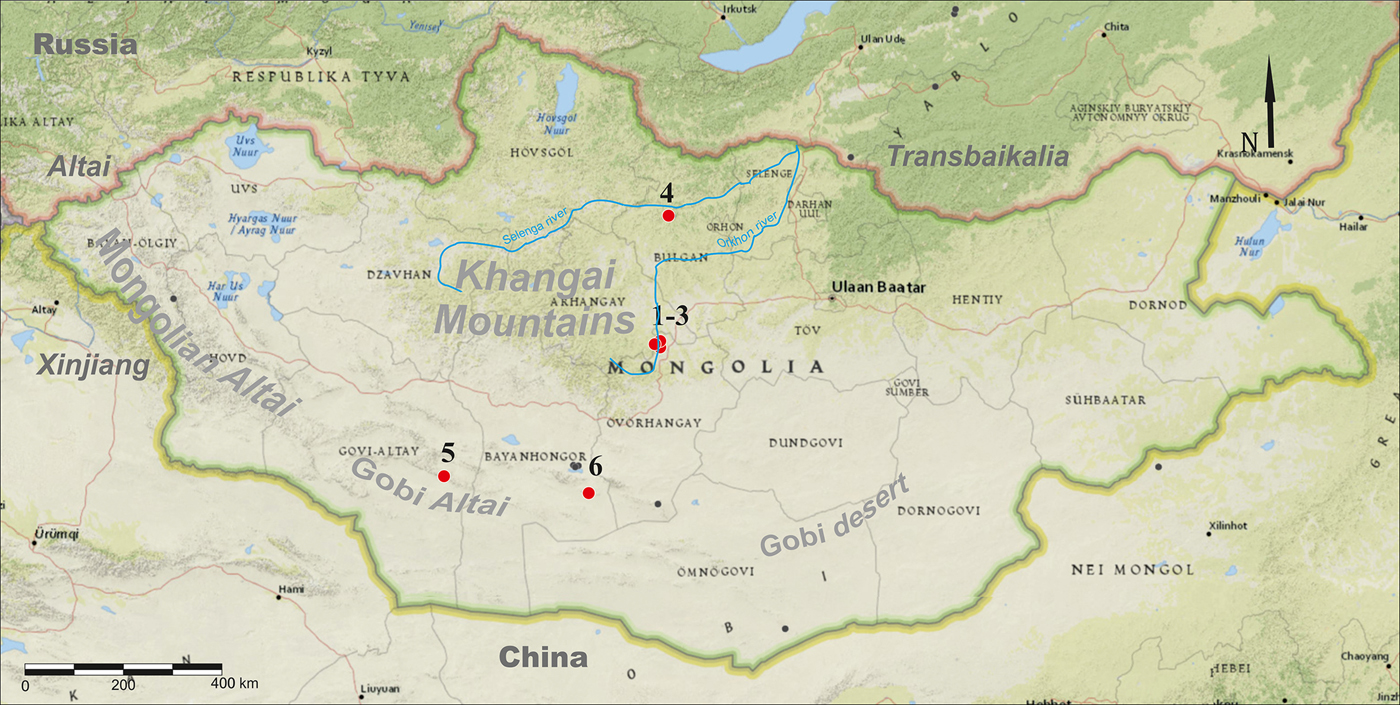
Figure 1. Map of sites with Middle Palaeolithic complexes in Mongolia: 1) Moil'tyn-am; 2) Orkhon-1; 3) Orkhon-7; 4) Kharganyn Gol 5; 5) Chikhen-2; 6) Tsagaan Agui Cave (map produced using National Geographic Society Basemap and ArcGIS Online by Arina Khatsenovich).
The Moil'tyn-am site is located in central Mongolia near the modern settlement of Kharkhorin, on the second terrace of the Orkhon River. This site has been excavated on three previous occasions: in the 1960s and 1980s by a joint Soviet-Mongolian expedition and by a French-Mongolian team in 1996–1997. Only two chronometric dates are currently available for Moil'tyn-am: 20 240±300 BP (Gif-10857) from layer 4 (Bertran et al. Reference Bertran, Fontugne and Jaubert2003) in a test pit excavated by J. Jaubert during the 1990s field season, and 18 830±890 BP (SOAN-8156) from the Russian-Mongolian expedition's sondage. Based on excavations conducted in 1985–1986, the Moil'tyn-am cultural sequence contains Levallois components in horizons 2, 3 and 4 (Derevianko et al. Reference Derevianko, Kandyba and Petrin2010), and, together with the lithology of the artefacts, suggests that the typological character of the lithic assemblages is not clearly chronologically correlated. Thus, Moil'tyn-am is probably a palimpsest of human activity. New radiocarbon dates, supplemented by OSL determinations and micromorphological analyses, will help clarify this complex situation.
Recent excavation was directed towards the acquisition of samples for new OSL and radiocarbon determinations, analysis of the spatial distribution of artefacts within the site layers and re-thinking the Middle Palaeolithic Levallois technology of the assemblages. We identified undisturbed areas on the edge of the terrace, including a convenient location to excavate a 2 × 1m test pit. The sediment stack exposed here, containing more than 450 artefacts, is approximately 1.7m in depth. We have preliminarily identified six lithological layers (Figure 2). The deposits of layers 2–4 are deformed along one vertical line, which is probably the result of cryogenic processes.
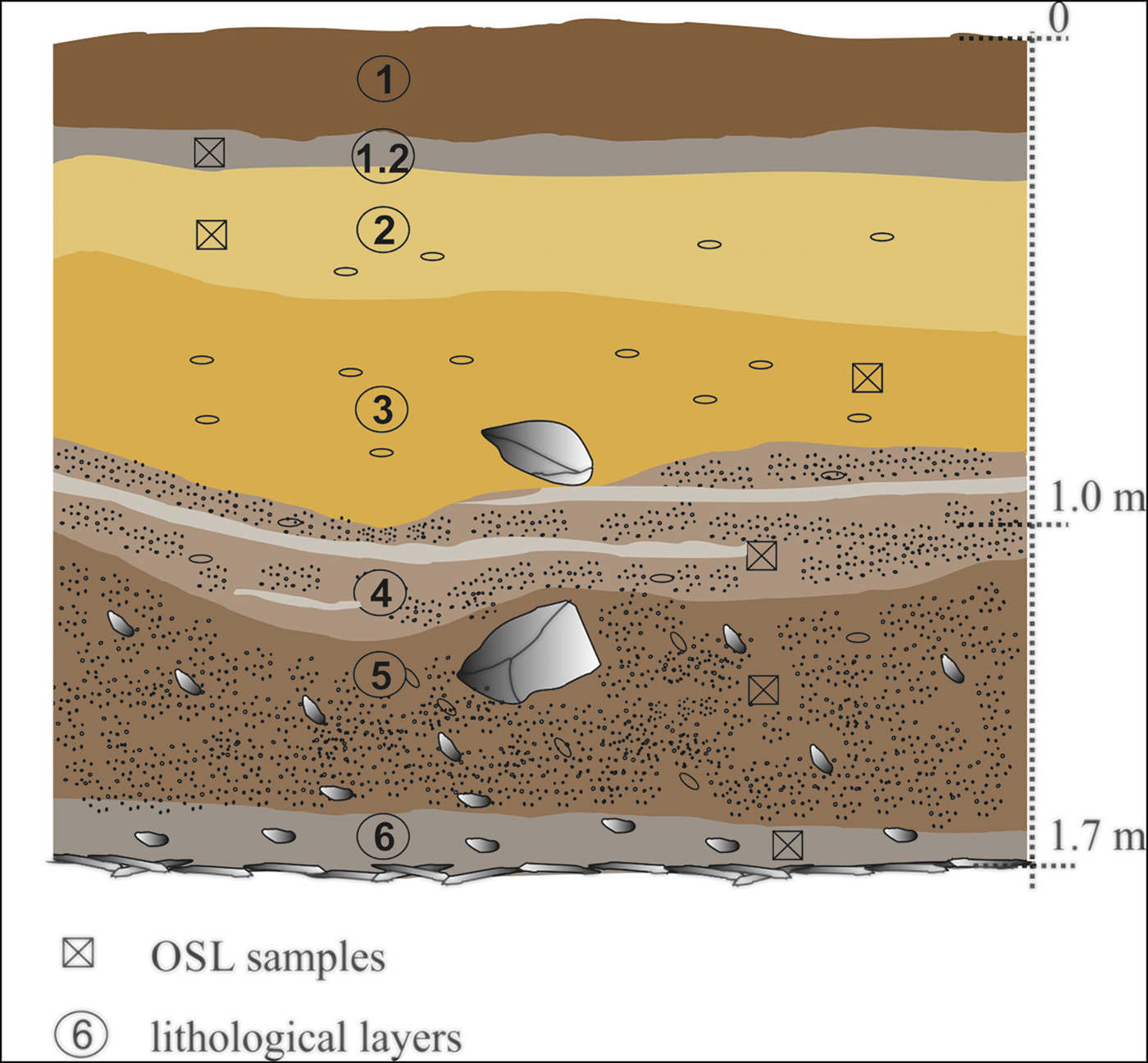
Figure 2. North-east-facing profile of the 2018 Moil'tyn-am test pit (figure by Arina Khatsenovich).
Layers 2 and 3 are the most archaeologically rich, but artefacts were also recovered from layers 4 and 5, albeit at lower densities. Layer 6 was not identified by previous excavators and contained only two flakes. The lithic assemblage from layer 2 contains a retouched Levallois point with a chapeau de gendarme striking platform, and layer 3 has yielded a triangular retouched Levallois point, both produced by convergent unidirectional flaking—a technique widespread in the final Middle Palaeolithic and initial Upper Palaeolithic periods of Mongolia. Levallois flakes produced by the most common Middle Palaeolithic centripetal Levallois method were found in layer 4 (Figure 3). This cultural sequence, which will be dated by a series of OSL and radiocarbon assays, will support the long-term presence of Levallois technology in Mongolia, perhaps dated as late as 30 550±410 (AA-31870) at Chikhen-2 in the Gobi Altai region (Derevianko et al. Reference Derevianko, Markin, Gladyshev and Olsen2015). Alternatively, it may suggest a palimpsest of cultural remains and the problematic nature of the chronological boundaries of Levallois technology in that region. This investigation also provides an opportunity to accumulate data on the human occupation of this area during the Last Glacial Maximum.
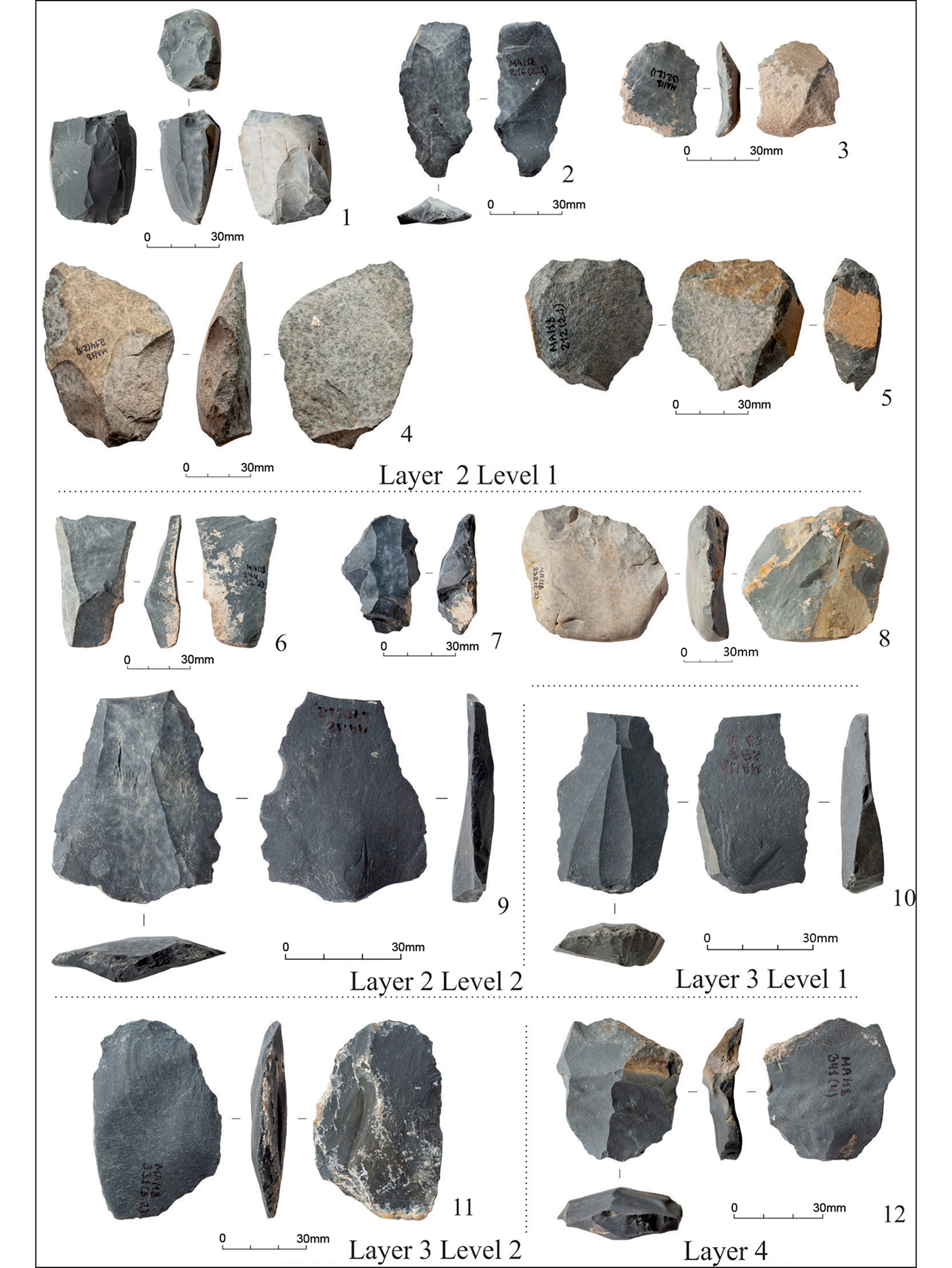
Figure 3. Moil'tyn-am, artefacts from layers 2–4: 1) sub-prismatic core; 2) stemmed blade; 3) perforator with ventral trimming; 4) dejété scraper; 5) end-scraper; 6) large bidirectional blade; 7) end-scraper; 8) bifacial scraper; 9–10) Levallois points; 11) side-scraper; 12) Levallois flake (figure by Sergei Kogai).
Another important site—Orkhon-1—was excavated in 2018 to determine the stratigraphic position of the Middle Palaeolithic cultural horizon and obtain samples for chronometric dating. A 3 × 2m sondage approximately 5m deep yielded only a small archaeological assemblage, but was sufficient to identify an Upper Palaeolithic horizon in layer 4 and a single Middle Palaeolithic horizon in layer 7 (Figure 4). It was previously thought that this Middle Palaeolithic material was derived from layer 6. In the absence of datable organic material, this horizon was assumed to be earlier than the top of the dated, archaeologically sterile, overlying layer 5, e.g. 38 600±800 BP (RIDDLE-716) (Derevianko et al. Reference Derevianko, Kandyba and Petrin2010).
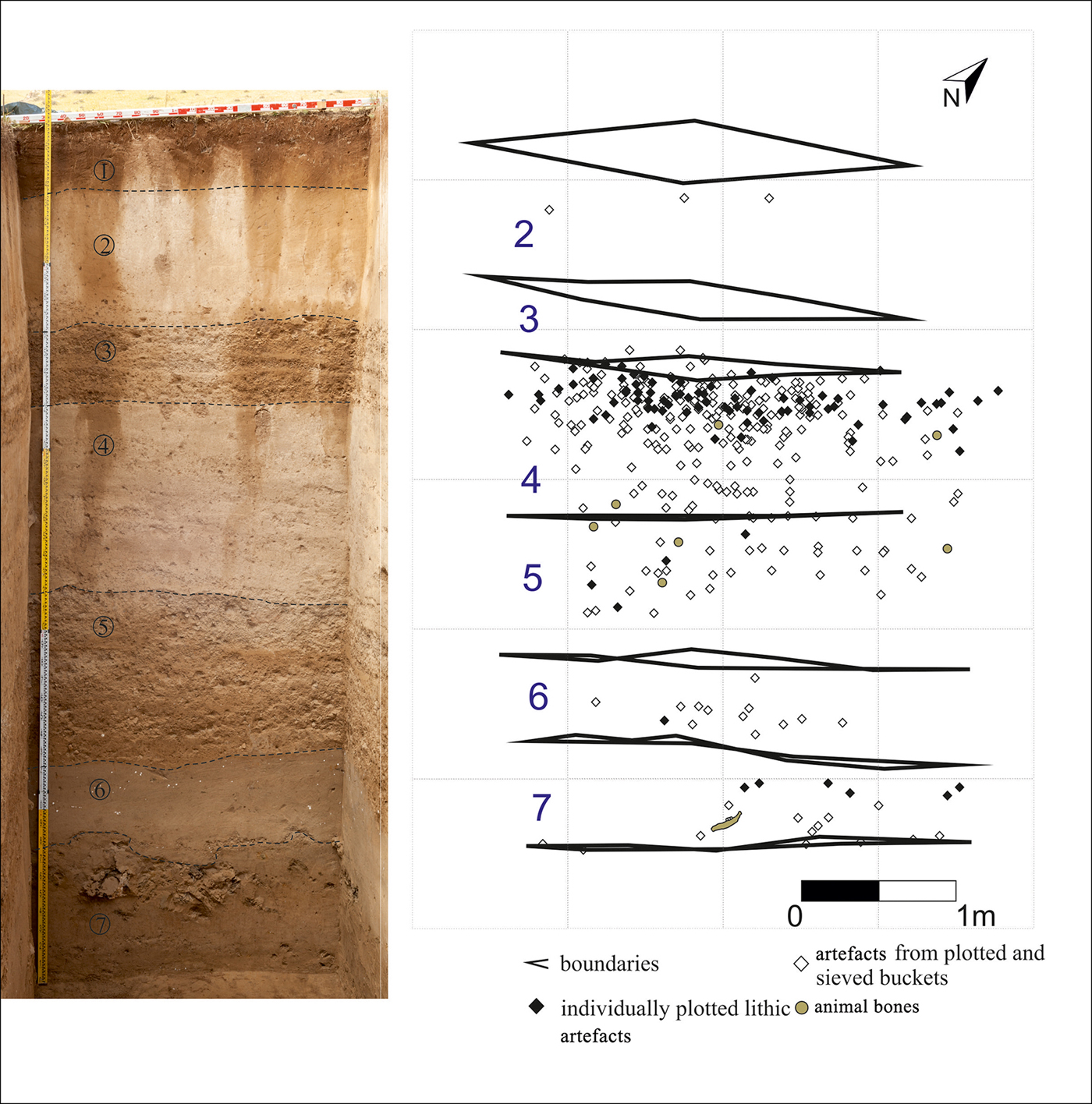
Figure 4. Orkhon-1, south-east-facing profile and spatial distribution of artefacts and faunal remains (figure by Daria Marchenko).
Layer 7 is at the level of the ancient floodplain of the Orkhon River—the earliest stage of the second fluvial terrace, correlated with cold and arid conditions, profound cryogenic processes and a high degree of carbonisation. Taking into account the position of the Middle Palaeolithic horizon in layer 7, we cannot exclude the possibility that this occupational episode may have occurred around the time of Heinrich Event 5 (c. 45 000 years ago (Hemming Reference Hemming2004)) or even earlier. This horizon includes a typical Middle Palaeolithic flake industry with Levallois technology (Figure 5). The 2018 lithic assemblage was also associated with bone samples that allow radiometric dating and exploration of the site's faunal complex. The mandible of an extinct Baikal yak, Bos (Poephagus) baikalensis, was recovered from the Middle Palaeolithic horizon. It is important to note that this is the first reliable reported discovery of a Bos baikalensis mandible with dentition.
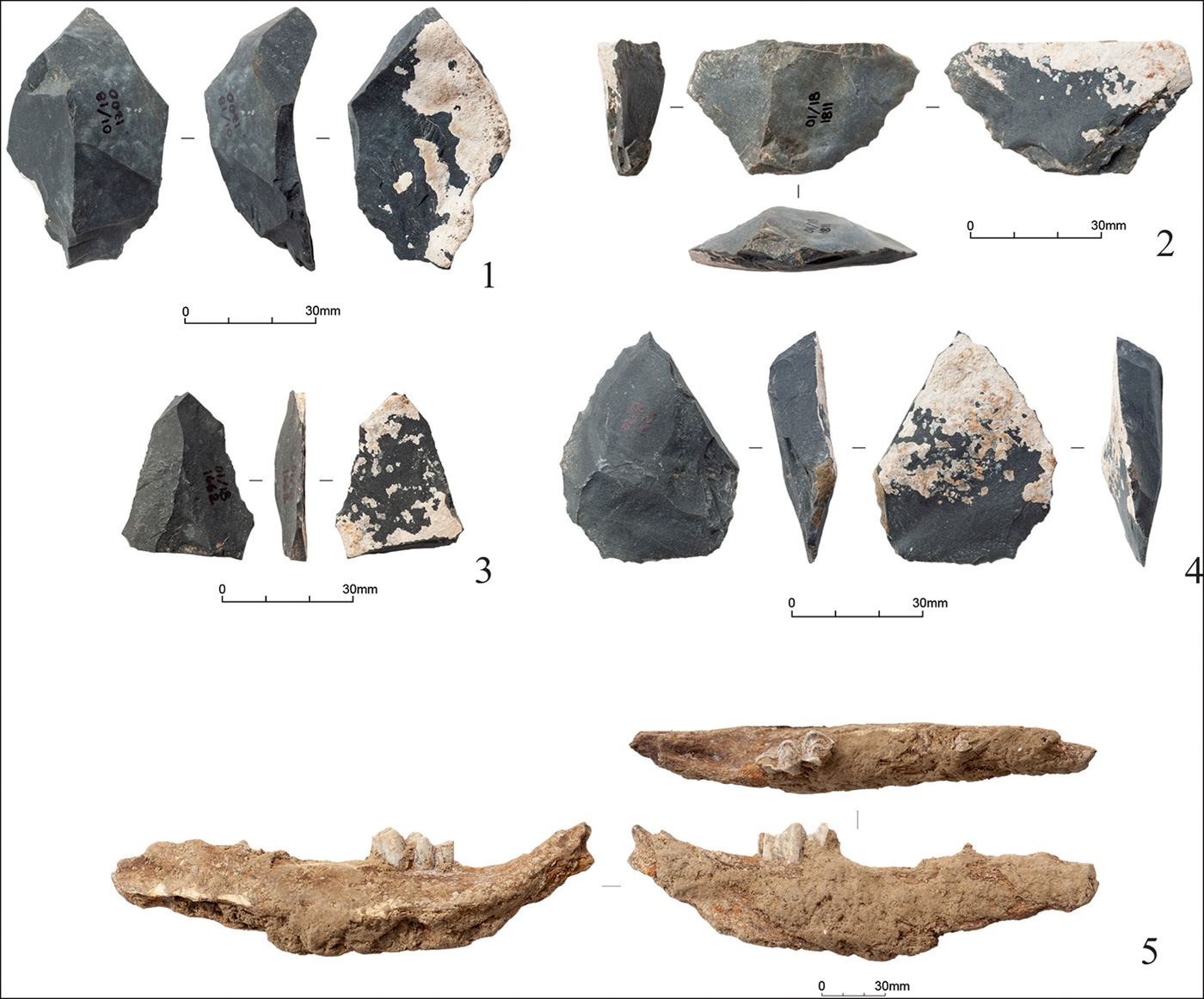
Figure 5. Orkhon-1, artefacts and faunal remains from layer 7: 1) core treatment element; 2) flake; 3) Levallois point; 4) point; 5) mandible of B. baikalensis (figure by Sergei Kogai).
These sites are crucial for the reconstruction of Mongolia's Middle Palaeolithic cultural chronological sequence. Thus far, the Middle Palaeolithic in Mongolia is not associated with any reliable chronometric dates, except at Kharganyn Gol 5 in northern Mongolia, which is one of only six known stratified Middle Palaeolithic sites in the entire country. Radiocarbon dates for the Orkhon cluster of sites were generated in the 1980s, but their stratigraphic position and association with cultural materials are not clear (Derevianko et al. Reference Derevianko, Kandyba and Petrin2010). The new investigations described here are targeted at addressing the following research question: do we have evidence of frequent, episodic short-term occupations or diachronic cultural continuity? The Late Pleistocene was characterised by positive, ameliorating palaeoclimatic conditions and corollary landscape changes. It is important for archaeologists to determine how these factors contributed, individually and synergistically, to the opening of migration corridors. This raises the question for future research: during what period did a Middle Palaeolithic corridor function and where can we draw the chronological boundary between the latest Middle Palaeolithic complexes and the earliest Upper Palaeolithic assemblages in this region?


